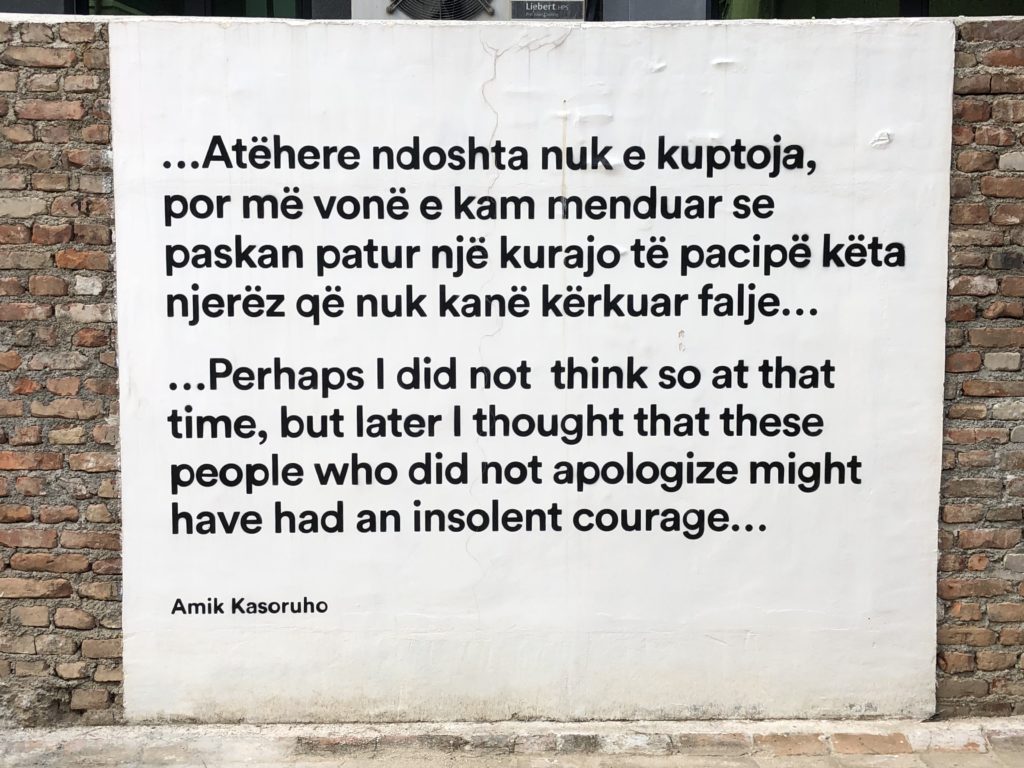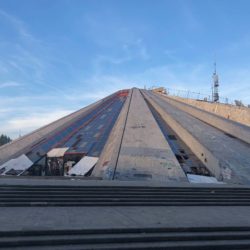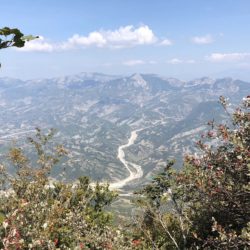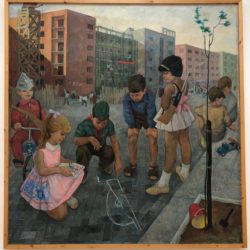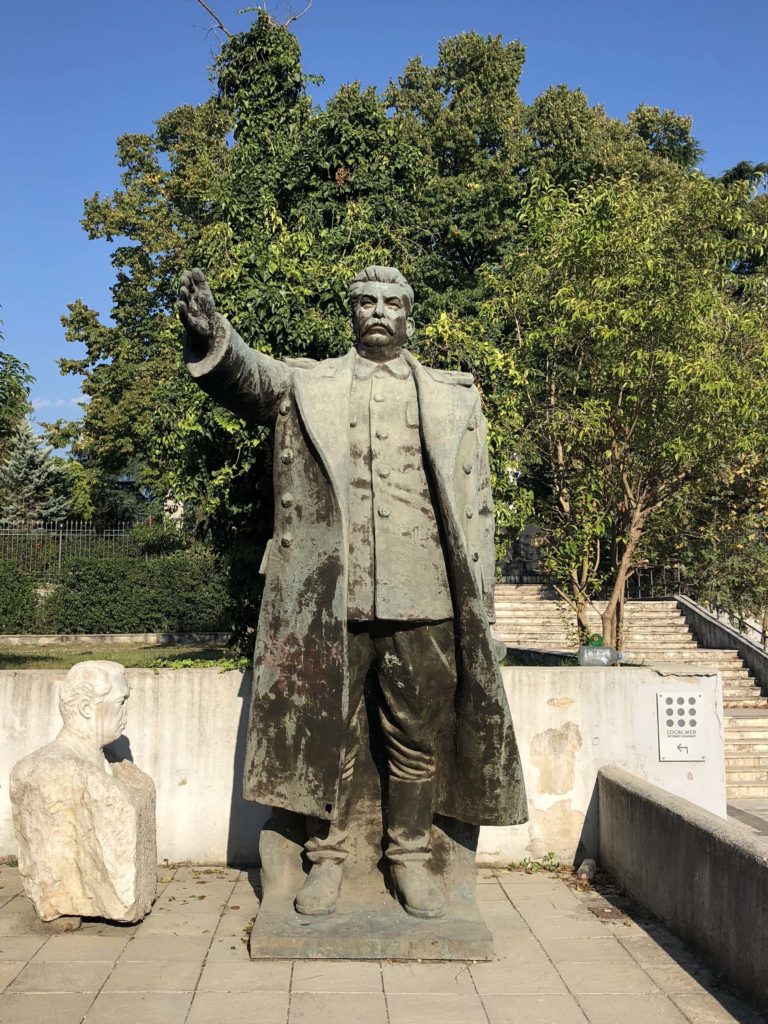
There’s no getting around it: if you want to appreciate Albania today, you must come to understand who Enver Hoxha was and how everything that occurred after his death in 1985 has been a reaction against his decades-long reign of terror that stifled a nation and its people.
There are two fantastic museums in the heart of Tirana that offer a good frame of reference for what life was like in Albania between the beginning of Hoxha’s rule in 1945 until 1992, when Albania shed its communist chains and declared itself a democratic nation. The first of these is BUNK’ART 2, the sequel museum to BUNK’ART, which I also visited on a day trip outside the city. The second museum is Shtëpia e Gjetheve (House of Leaves), which offers an in-depth look at the Sigurimi (Secret Police) and the surveillance state that thrived under Hoxha.
BUNK’ART 2

Were the BUNK’ART museums created specifically for me, because their synthesis of history museum meets art exhibition, all located in the confines of an underground concrete bunker sounds like my dream museum come to life. (The point of this blog has basically been to create a “BUNK’ART” for each country I visit; how can I tell the story of my travels through the lens of the history, art and people I’ve encountered in each capital of the world?)
Postbllok Checkpoint Memorial
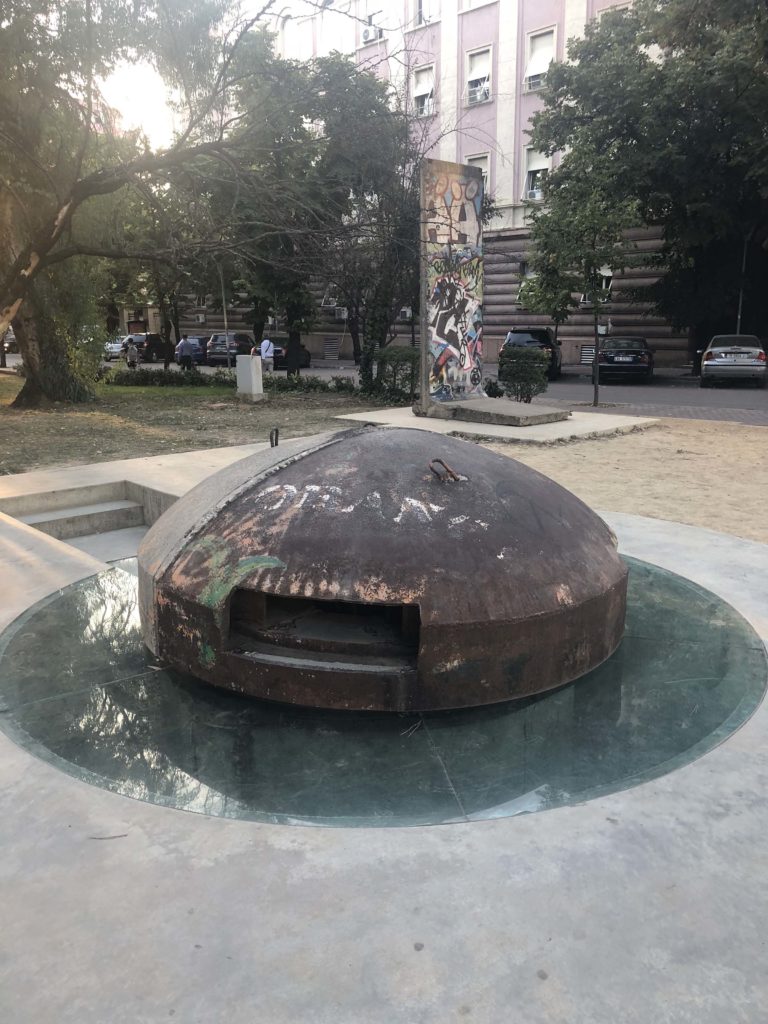
Sorry, before I dive into BUNK’ART 2, we first need to pause for a moment and discuss these bunkers. Enver Hoxha, totalitarian dictator of Albania from 1945 until his death in 1985, brought paranoia to a whole new level. Hoxha was certain that Yugoslavia, Greece, the Soviet Union, China, the United States and all of Western Europe were conspiring against him, ready to destroy his tiny nation with their military and nuclear might at any moment. (If you believe you have so many enemies, perhaps the problem is you and not them.)

Beginning in 1967, Hoxha initiated his program of bunkerizimi (bunkerization), which aimed to build underground concrete bunkers in every corner of Albania. Some bunkers, namely those for himself and other top ranking officials, would be able to withstand a nuclear attack, while others would be only be strong enough to not collapse under the weight of a tank or dropped bomb. The bunkers were strictly military installations. They were not outfitted to shield families in the case of an attack, but rather their purpose was for Albanian soldiers to take up station and defend their country from foreign agents. The bunkers were ultimately never used (except to run a few drills).

Presently, almost 175,000 bunkers have been unearthed across Albania, but it is believed that over 200,000 were ordered to be built. Today most sit derelict and empty, although there have been a few initiatives to repurpose the bunkers into community centers; I can only imagine that they would make for a rather gloomy atmosphere. Some have been painted over in bright colors by the locals, but now the two most famous are BUNK’ART (Hoxha’s private 106-room bunker outside Tirana) and BUNK’ART 2 (the bunker for the Minister of Internal Affairs near Skanderberg Square).

The bunker that stood guard as a checkpoint to the Blloku neighborhood in Tirana has been turned into a memorial, along with a piece of the Berlin Wall and pillars from Spaç Labor Camp, one of Hoxha’s most notorious detention centers for political prisoners. Blloku was the home of all high-ranking communist officials and the area was strictly off-limits for the rest of the citizens of Tirana. Hoxha himself resided in Blloku; there are talks of turning his house into a museum, but for the moment you are unable to do more than snap a few photos from the sidewalk.
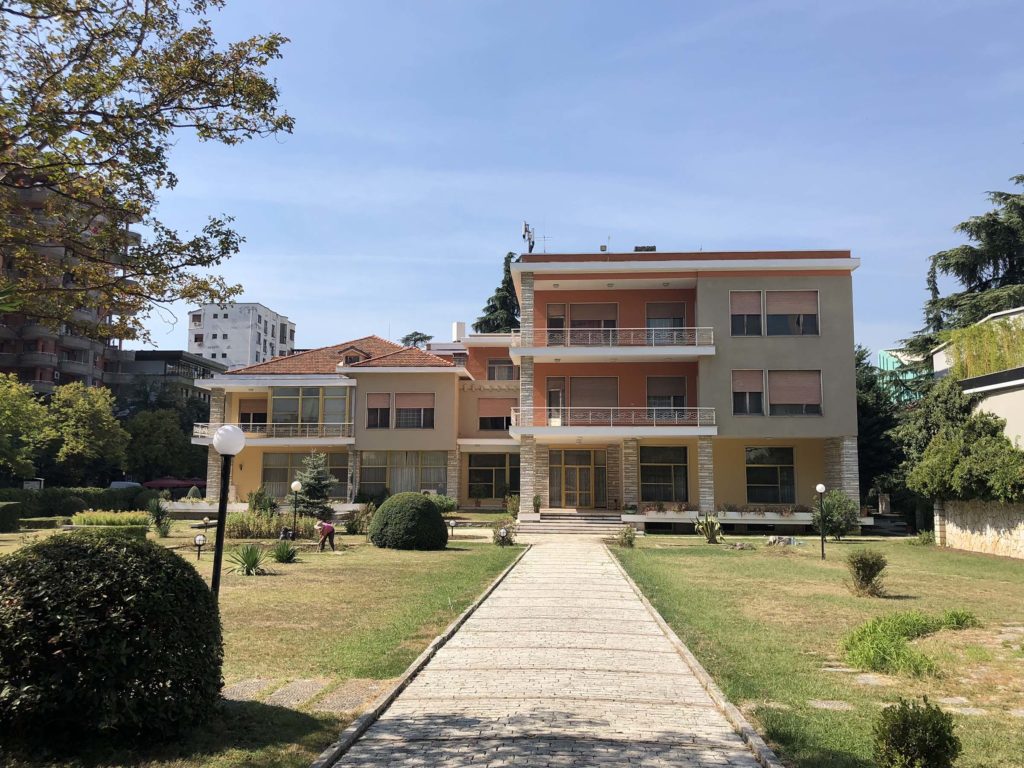
After the fall of communism in 1992, Blloku became the epicenter of trendy Tirana. Swanky boutiques, coffeehouses, restaurants and nightclubs all can be found here. The verboten neighborhood has now become the hipster headquarters of Albania.
BUNK’ART 2 (con’t)
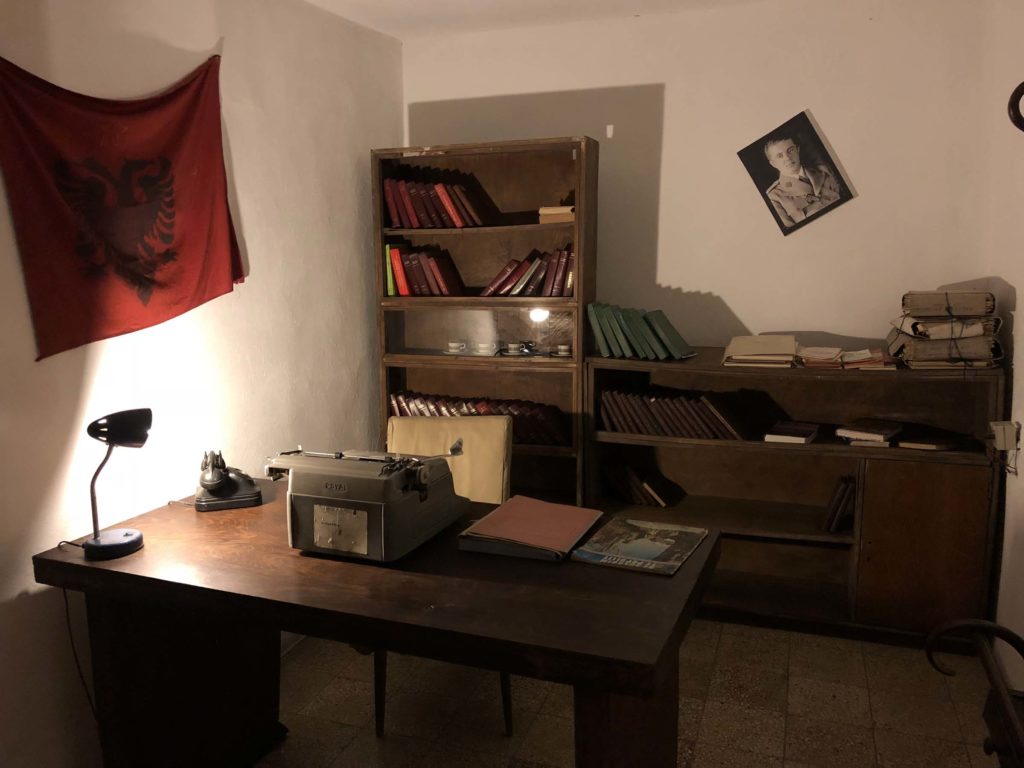
Ok, back to BUNK’ART 2! The original BUNK’ART was established in 2014 and after its popularity grew, BUNK’ART 2 opened shortly thereafter in 2016. It takes time to grapple with one’s past, especially when it is as dark as Albania’s communist period, and I was impressed with the level of honesty and insight that is on display in these two museums. There’s no sugar-coating and no one escapes judgement.
The museum is spread out over the bunker’s 24 rooms which take up 1,000 sq meters (10,763 sq ft). The walls of the bunker are almost 2.5m (8ft) thick. Some of the rooms, like the one above, were left as they were found in 1992. Although this bunker was built for the Minister of Internal Affairs, he never once used his office here.
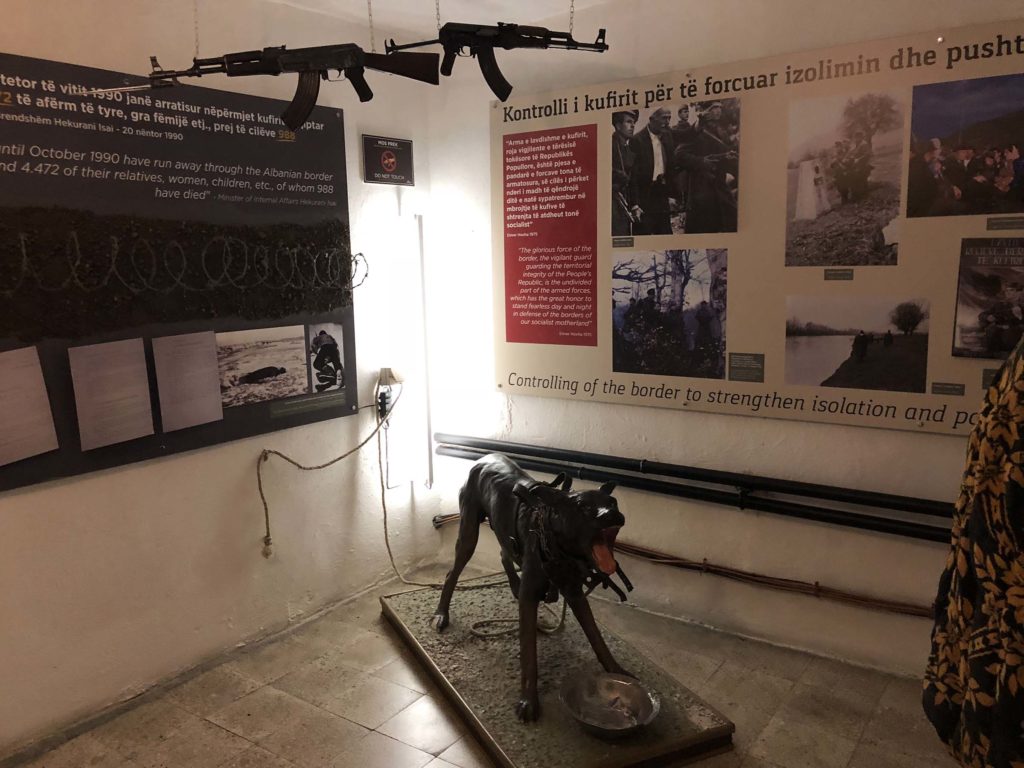
Other rooms are devoted to different aspects of life under Hoxha’s rule, one of which being the “Border Forces,” an elite military unit of 30,000 soldiers responsible for guarding Albania’s borders. Hoxha was an isolationist to the extreme. Illegally entering or exiting the country was punishable by death; if a person managed to escape then any family member left behind was fair game to face the consequences. The Border Forces were disbanded in 1991, but during their tenure they killed 988 people attempting to flee Albania. Over 9,000 people did successfully make it to Yugoslavia or Greece, where they were granted asylum.
Hoxha burned bridges with his communist allies left and right as he quickly grew suspicious of each of them. Yugoslavia was the first ally to be cut off in the late 1940s, followed the Soviets in 1961 and finally China in 1970. (Communication with the West was obviously always forbidden.) Hoxha rewrote the constitution in 1976 and stated that Albania needed to be completely self-reliant. Foreign trade, loans and investments were all prohibited. This sunk the nation into abject poverty for the next fifteen years.

There was no privacy in communist Albania and all aspects of life were controlled by the state. In 1967, Hoxha declared Albania the world’s first atheist state and all priests, rabbis and imams were given the option to renounce their faiths or be executed. All telephone calls and letters were surveilled by the government and turning on your neighbor was a good way to ensure your safety. There was an Albanian saying that for every ten Albanian citizens there were eleven spies.
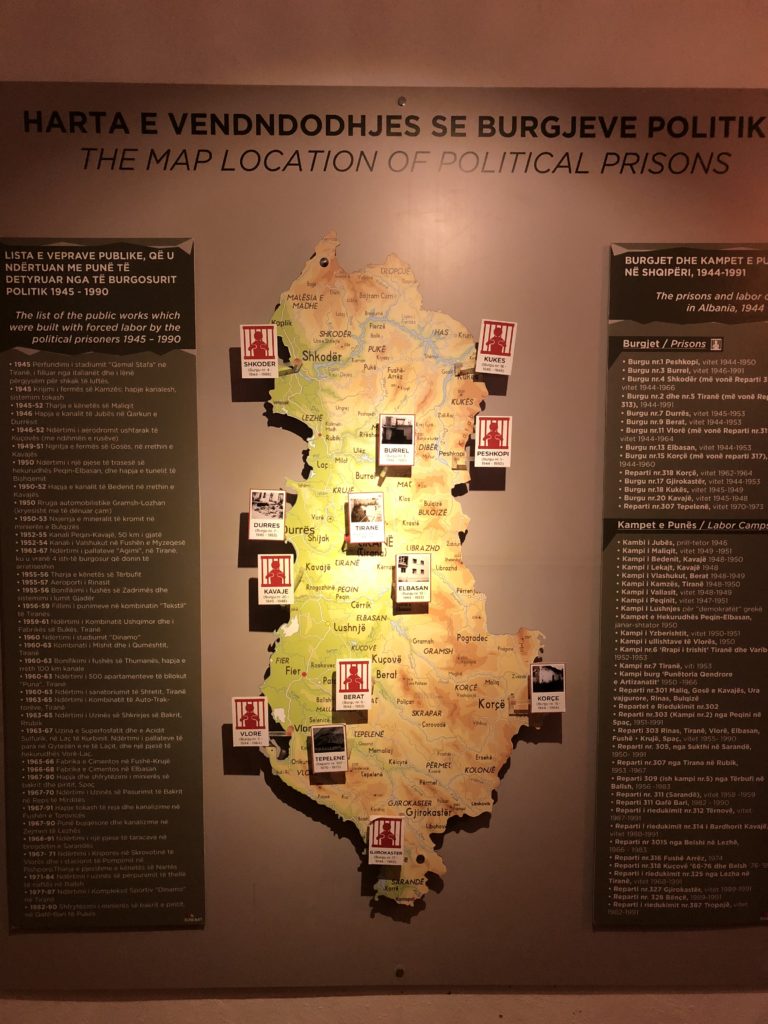
If your hero and role model is Joseph Stalin then you’re probably a sociopath. Guess who Hoxha looked up to, admired and modeled his early career after? Like Stalin’s gulags set up across Siberia, Hoxha built forced labor camps in Albania for anyone he viewed as threat. Both men and women were tortured and beaten between their shifts of hard labor. Women were routinely raped and forced to get abortions in the event that they became pregnant. Tens of thousands passed through the camps and 6,027 died while serving out their sentences. Remember, this was not a foreign government carrying out these injustices during wartime, but Albanians attacking other Albanians in a supposed time of peace.
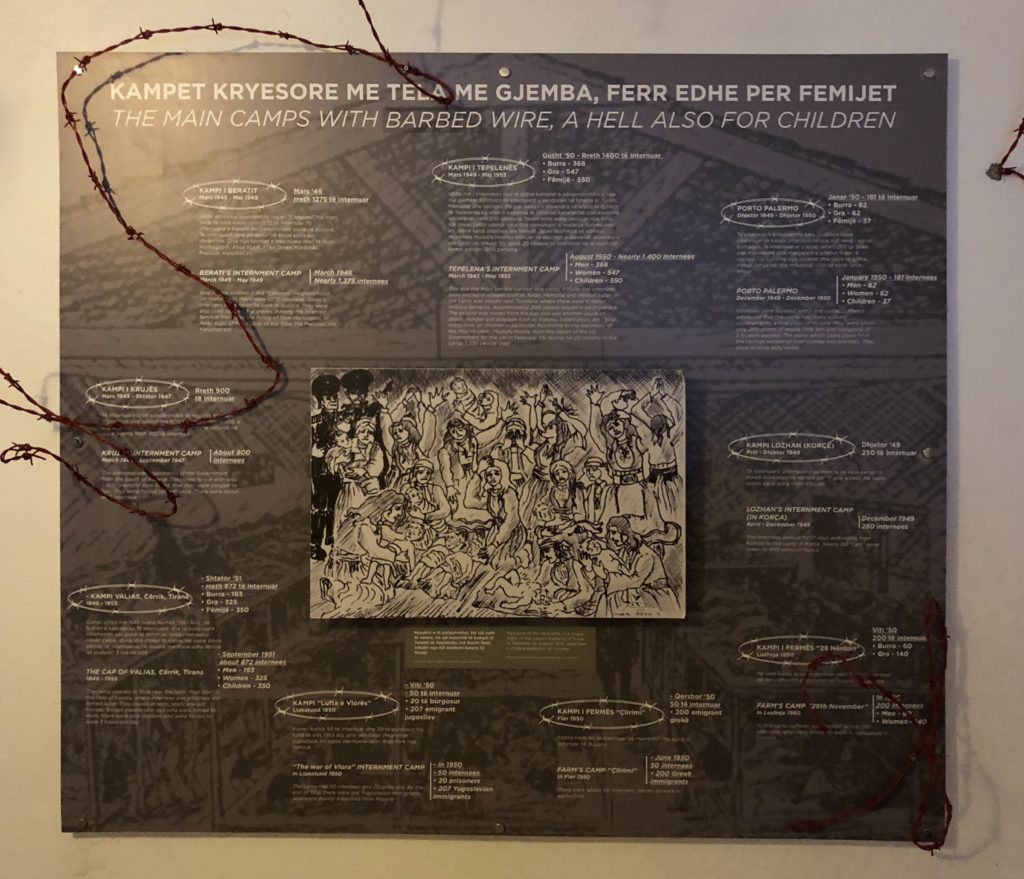
Children did not escape the camps either. Hoxha believed that if the parents of a child were a threat to his rule, then it stood to reason that the children would be raised to be threats also. They were likewise sent to the prisons, and although they were not forced to work, they were given almost no food and many died from starvation and disease. No one was innocent in Hoxha’s eyes.
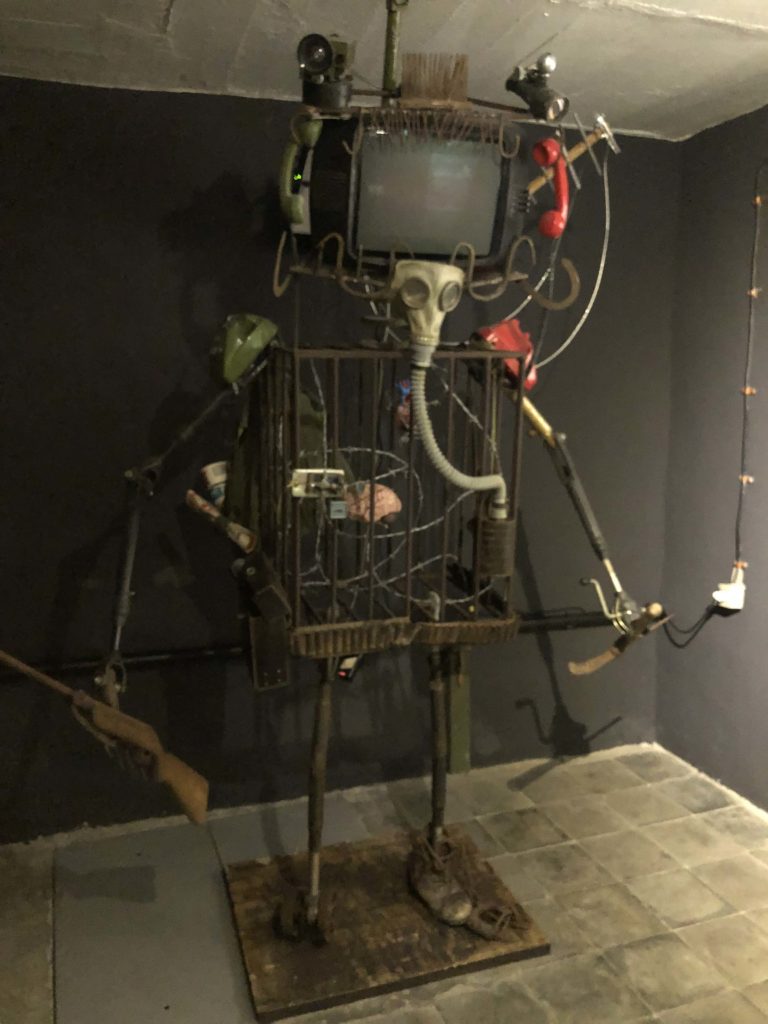
Two more rooms I want to discuss involve the destruction of government documents and the story of the Popa family. As someone who has worked in a bakery for the past twelve years of my life, this first story held an added layer of intrigue. Unlike the Nazis and the Soviets, Hoxha tried to destroy all crucial and incriminating documents- directives that detailed the injustices committed by his government. He was fearful that simply shredding top secret papers would still lead to the information leaking out, so Hoxha made deals with three local Tirana bakeries. They would dispose of all sensitive materials by wetting the paper and mixing it into vats of dough (that would later be taken to landfills and destroyed) and in return the bakers and their families would remain safe from harm.
The second story concerns the Popa family and how their actions became the catalyst that brought about the fall of the communist government. After Hoxha’s death in 1985, the new regime held a massive parade to commemorate the dictator’s life. In the midst of this mandatory “celebration,” six siblings of the Popa family (two brothers and four sisters ranging in ages from 47-65) managed to slip into the Italian Embassy and were granted asylum by the Italians.
The new communist government was furious with Italy after they discovered what had transpired. They demanded the Popa siblings be returned to Albanian soil, but the Italians stood their ground. 800 troops surrounded the embassy and only the cleaning crew was allowed to enter and exit the building. The Sigurimi enlisted one of the embassy’s maids to spy on the siblings and they installed a listening device in the tip of her broom. The siblings remained in the embassy for over five years, all the while the maid was able to thwart the Italian ambassador’s plans to smuggle the family to safety.
Finally, in 1990 the UN stepped in and negotiated safe transit for the siblings to the airport, after which they flew to Rome and freedom. Upon word of this spreading, hundreds of Albanians flocked to other western embassies, begging for asylum. University students began protesting in the streets as the communist government was exposed to be weak and powerless. In 1991, protestors brought down Hoxha’s statue in Skanderberg Square, as well as other statues of Lenin, Stalin and images of happy communist workers. (These statues can still be seen today behind the Galeria Kombëtare e Arteve [National Gallery of Arts] where they have been placed in a statue graveyard. We don’t have to glorify these past historical figures, but we must not forget them either.)
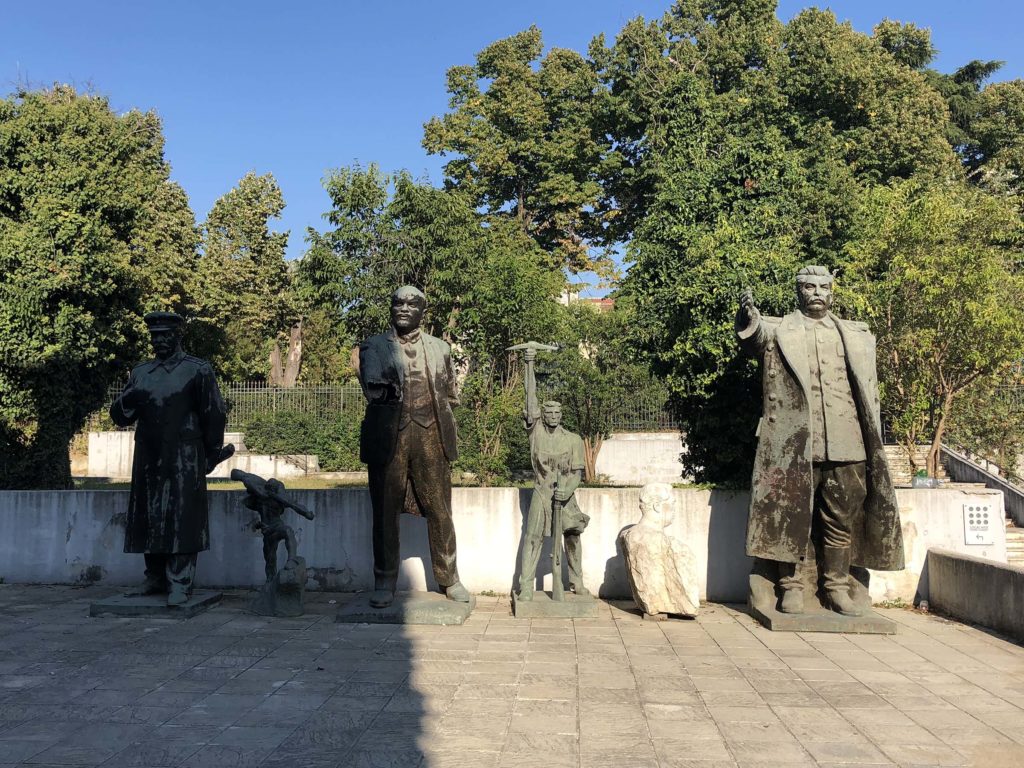
I had always planned on making the journey out to BUNK’ART, but after being blown away by BUNK’ART 2, I was doubly excited for my day trip outside the city later in the week. Despite the name, you don’t have to see BUNK’ART 2 after you’ve visited the original museum, although I do recommend visiting both and not just one.
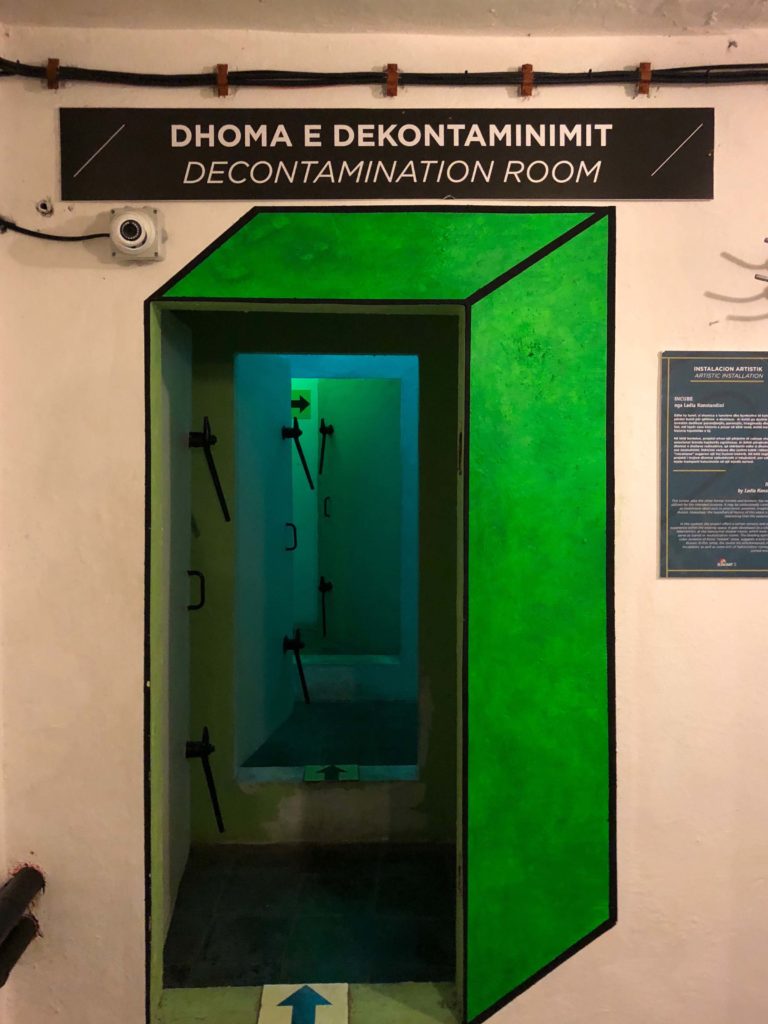
For a moment of levity in an otherwise heavy experience, the decontamination rooms, which were to be used in the event of a nuclear attack, have been painted neon green by a local artist.
Shtëpia e Gjetheve (House of Leaves)

Just a ten minute walk from BUNK’ART 2, the outstanding Shtëpia e Gjetheve (House of Leaves) takes a closer look at the Sigurimi in a museum operating out of their former Tirana headquarters. The building was constructed in 1931 as the first maternity clinic in Albania. When the Sigurimi was formed post-WWII, the doctor’s office was viewed as the perfect cover to house Hoxha’s favorite organization. Although the clinic ceased to function, the true occupants of the building were never revealed to the public, giving the house its name, as whispered rumors circulated, like the rustling of leaves.
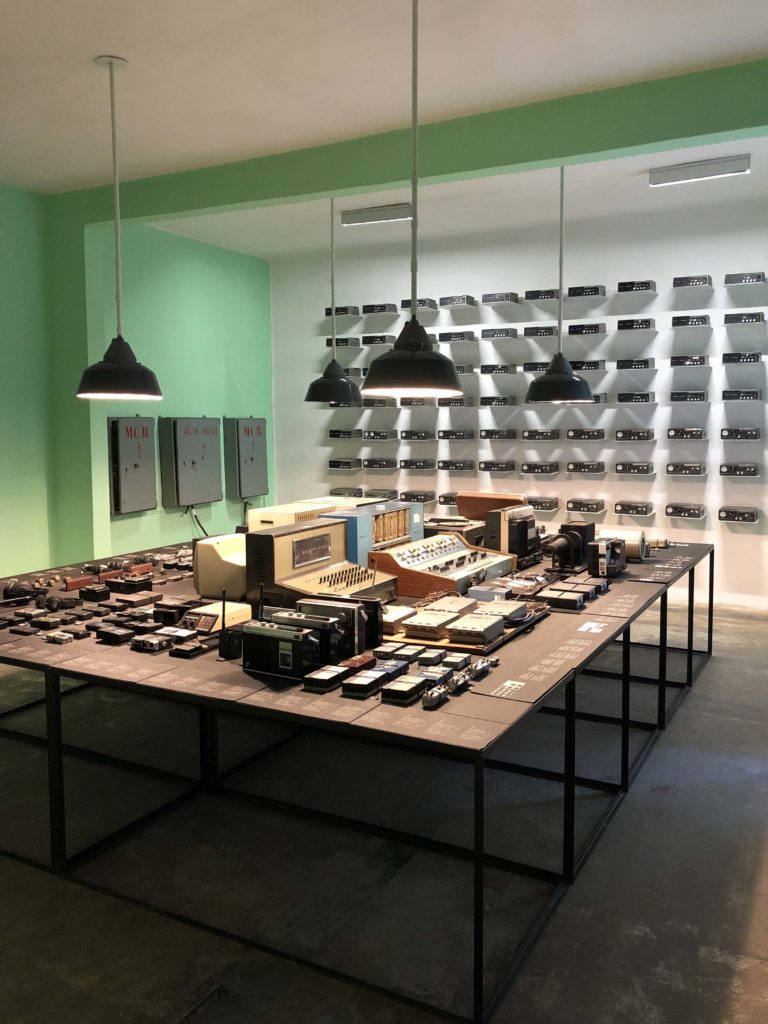
Hoxha once said that the Sigurimi were the “sharp and dear weapon of our [communist] party,” and they were to have “total control over human bodies and souls.” Anyone suspected of being an enemy of the state was arrested by the Sigurimi, after which they were tortured and interrogated. A “trial” was usually held where two witnesses, sometimes people you never knew, would testify that you were a spy working with a western government. You were not allowed to speak or provide a defense. Sentencing was instantaneous and if found guilty (you were always found guilty), you would be sent to a prison camp to serve out your sentence.
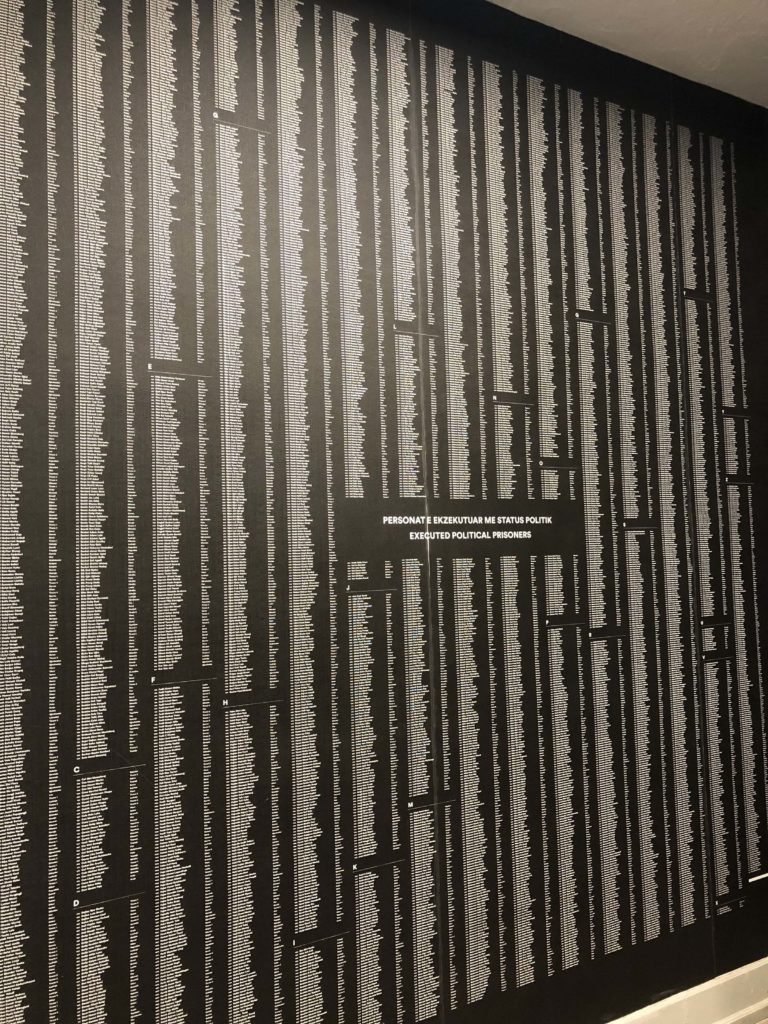
International mail was not allowed in Albania; all post sent domestically would be read by the Sigurimi. All telephone calls were monitored; the only television and radio stations available were state-run propaganda machines. If you were caught trying to build an antenna to capture foreign channels, you would receive twenty years hard labor.

The motto of the Sigurimi was “Për popullin, me popullin,” (For the people, with the people) and one of their main tasks was to force the propaganda that Hoxha’s administration produced down the throats of their fellow citizens. The museum has several interesting displays of communist magazines and clips of communist films that were popular at the time. These magazines taught you how to be a “good” Albanian: always follow the rules and don’t get in trouble. Even whistling the wrong song or making an inappropriate joke could land you in hot water. The only way to stay safe was to follow Hoxha’s instructions of proper behavior to a T.
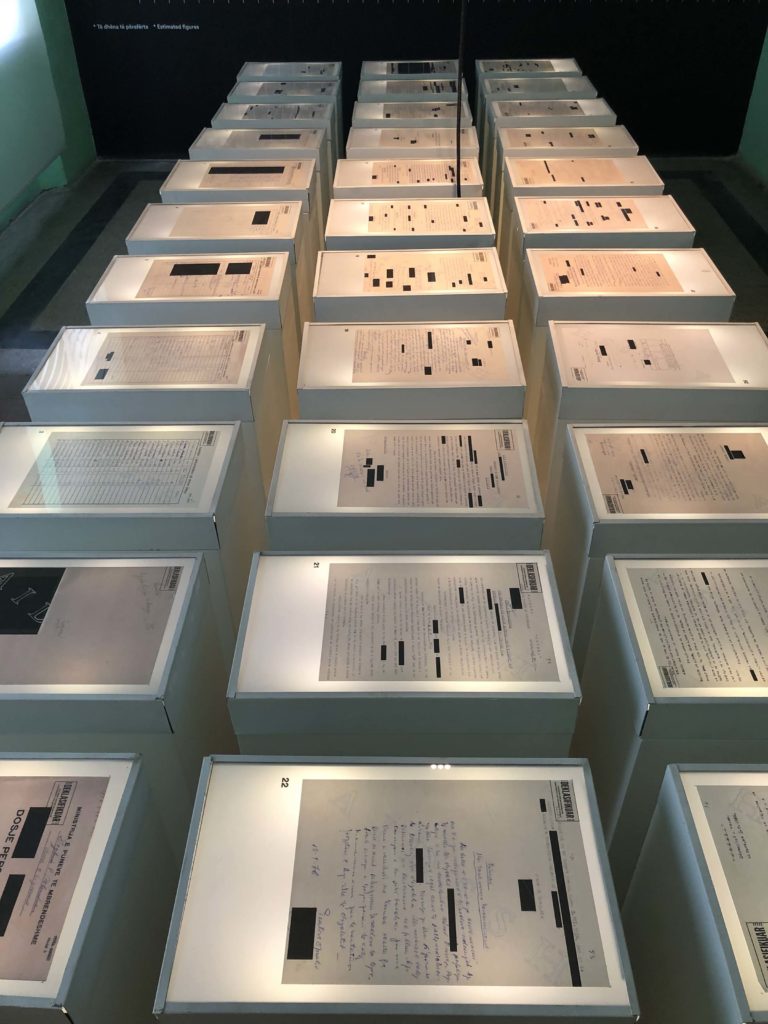
Since the fall of communism, there has a been a large push for the democratic government to make all remaining documents of the Sigurimi and Hoxha public. This has caused a rift in modern society as those who cooperated with the Sigurimi have now been exposed and several have been made to stand trial. Although the collaborators argue that they had to inform on their neighbors to save their own lives, it is very difficult to maintain systematic oppression without compliance and assistance from segments of the general population. If no one had participated in the Sigurimi’s farce, how many lives would have been spared?

This chapter of Albanian history was a far cry from what I had learned the previous day about Skanderberg, the Frashëri Brothers and the struggle for Albanian independence from the Ottoman Empire. Then I saw a united people fighting against a foreign occupier. Now I witnessed Albanian turning against fellow Albanian; basic human rights like freedom of religion, speech and the press had been suspended not by a foreign dictator, but by a home-grown authoritarian. It was those who dared stand up to Hoxha, risking their own lives and the lives of their families, who have emerged the ultimate heroes in this saga. A quote from Albanian writer Amik Kasoruho, who survived life at a prison camp himself, is posted as you exit the House of Leaves. It has stuck with me and I’ll leave you to ponder it here:
